Exploring the hidden dangers within nature, our journey into the realm of flora unveils a sinister side as we delve into the realm of The 10 Deadliest Poisonous Plants in the World. From enchanting blossoms with toxic secrets to seemingly innocent leaves concealing lethal compounds, this comprehensive guide navigates the treacherous landscapes of plants that can pose a serious threat to human life. Join us on this intriguing botanical expedition as we uncover the stories behind these lethal greens, examining their deadly attributes, historical implications, and the cautionary tales they whisper about the delicate balance between beauty and peril in the plant kingdom.
The List of the 10 Deadliest Plants
10. Rosary Pea or Crab’s Eye Vine
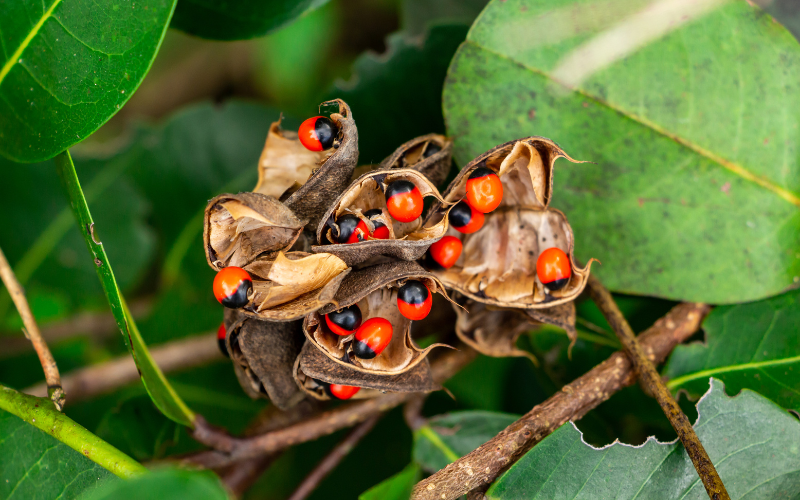
The diminutive beans from this plant carry a potent impact. Also recognized as the jequirity bean, this climbing member of the bean family (Fabaceae) is indigenous to Asia and Australia but has become highly invasive in numerous regions worldwide, including parts of the Caribbean and the USA.
While often chosen as an ornamental plant, it holds deeper cultural and religious significance in various countries. For instance, in Trinidad, the vivid red beads are strung into bracelets and worn for protection against malevolent spirits. This practice persists despite the peril posed by the ingestion of just a single seed, which can be fatal.
Its toxicity is so pronounced that it has even been utilized for illicit purposes, such as the lethal poisoning of cattle, employing a small spike coated in the seed paste.
9. Deadly Nightshade
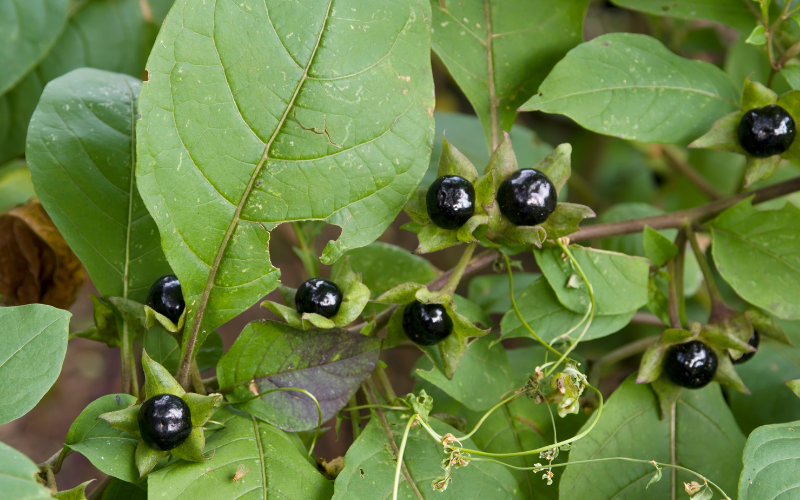
Arguably the most notorious on our roster is Atropa belladonna, aptly christened Deadly Nightshade. This poisonous plant belongs to the same botanical family as tomatoes, potatoes, and eggplants and is distributed across Europe, including Britain, as well as North Africa, Western Asia, and certain regions of the USA and Canada.
Despite its status as one of the most toxic plants known, with as few as 10 berries believed to be lethal for an adult, its nomenclature is ironically derived from its historical use in the realm of beauty. The term “bella donna” in Italian translates to beautiful woman. Drops derived from the plant were once utilized to dilate pupils, creating the illusion of larger, brighter, and more attractive eyes in ladies. Fortunately, this practice is now exceedingly rare, given the associated adverse effects such as visual distortions and even blindness.
8. Manchineel
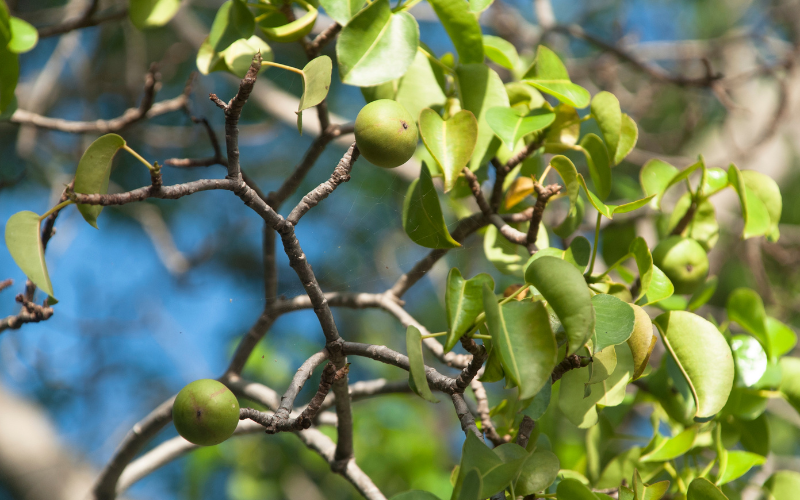
The deadly nature of the Manchineel, acknowledged as the world’s most poisonous tree, is underscored by one of its Spanish names, manzanilla de la muerte, translating to “little apple of death.” Indigenous to tropical regions of the Americas, the Manchineel rightfully earns its reputation as ‘the world’s most dangerous tree.’ Every component of the tree, from the bark to the sap, is profoundly toxic.
The fruits, being the part most likely to be unwittingly ingested, pose the greatest threat. A mere bite of these small green crab apples can induce intense agony and potentially lead to death. Even standing beneath the tree during rainfall is perilous, as the dripping sap can cause the skin to burn and blister. Clearly, it is advisable to steer clear of this hazardous tree!
7. Tobacco
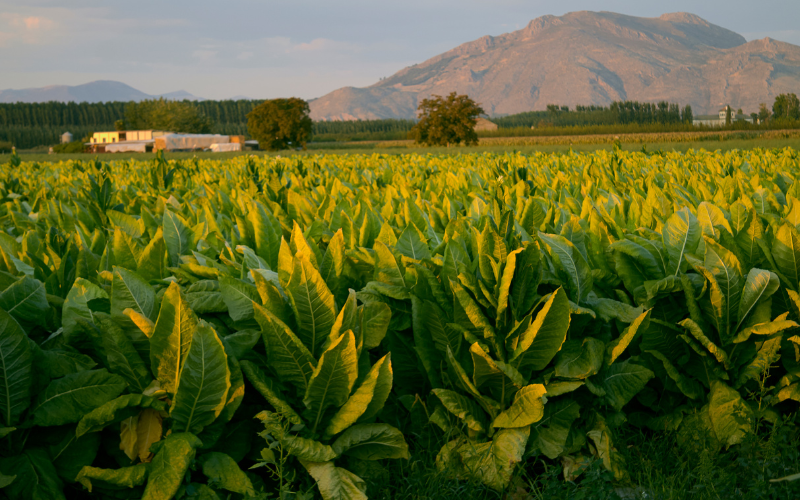
One of the world’s most renowned, and for some, cherished plants happens to be among the most hazardous. Tobacco, the most extensively cultivated non-food plant globally, was used by an estimated 22.3% of the global population in 2020. Despite its widespread popularity, every part of the plant, particularly the leaves, contains toxic alkaloids—nicotine and anabasine.
Tobacco is classified as a cardiac poison, and direct consumption may lead to fatal outcomes. Indirectly, it remains exceptionally perilous, contributing to the demise of 8 million individuals annually, as reported by the WHO, largely due to the consequences of cigarette smoking. Undoubtedly, its inclusion on our list of deadly plants is well-founded.
6. Lily-Of-The-Valley
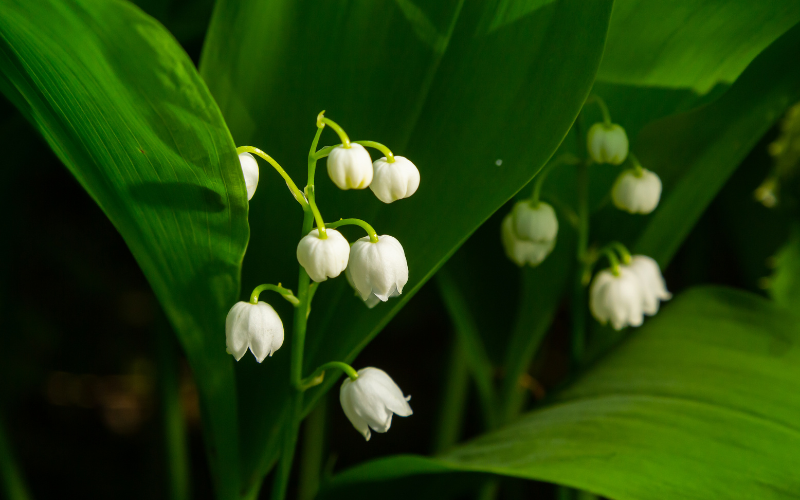
Exquisite, fragrant, yet treacherous—Lily-Of-The-Valley, a lavish flowering plant celebrated for its delicate fragrance and associations with love and joy (even finding a place in the Duchess of Cambridge’s wedding bouquet), conceals a dark secret: high toxicity. Its peril lies in the elevated levels of cardiac glycosides, rendering its flowers and alluring red berries potentially lethal if ingested.
As is often the case with toxic flora, Lily-Of-The-Valley has a history rooted in folk medicine, with purported uses ranging from treating gout to curing muteness. Nevertheless, it is crucial to note that there is no scientific evidence supporting the plant’s efficacy in treating human ailments.
5. Oleander
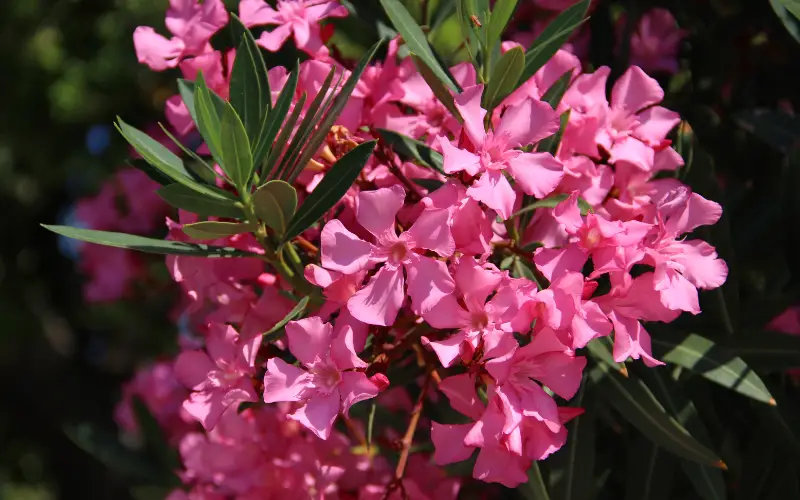
Another enchanting yet toxic blossom is the Oleander. Renowned for its vibrant flowers, immortalized by artists from Klimt to Van Gogh, this visually appealing pink plant conceals a potent poison. Similar to Lily-Of-The-Valley, it harbors toxic cardiac glycosides. Fortunately, its intensely bitter taste serves as a deterrent, reducing the likelihood of accidental ingestion and keeping oleander poisonings rare.
With a history steeped in cultivation, the Oleander’s poisonous properties were documented by Pliny the Elder in his renowned work Naturalis Historia in AD 77. Despite the book’s questionable accuracy, Pliny also erroneously touted its utility as a snakebite antidote, when in reality, it would likely hasten one’s demise.
4. Hemlock Water-dropwort
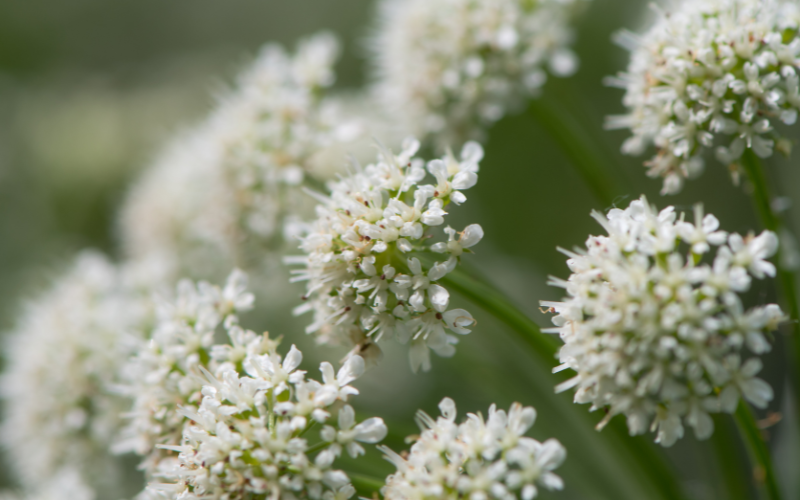
Yet another plant bearing a macabre moniker and an even more eerie narrative is the hemlock water-dropwort, occasionally referred to as ‘dead man’s fingers.’ This plant belongs to the carrot family and, despite its reputed pleasant taste, is unequivocally unsuitable for inclusion in any culinary concoction.
Speculation surrounds the possibility that this plant may be linked to the origin of the term ‘sardonic grin.’ Hemlock water-dropwort poisoning, which includes consequences such as lung collapse, brain hemorrhage, and fatality, induces spasms and contractions in facial muscles, resulting in a conspicuous ‘smile’ on the victim’s face. The term ‘sardonic’ is believed to be connected to the historical use of the plant in the ritualistic execution of the elderly and criminals in ancient Sardinia.
3. Cerbera Odollam
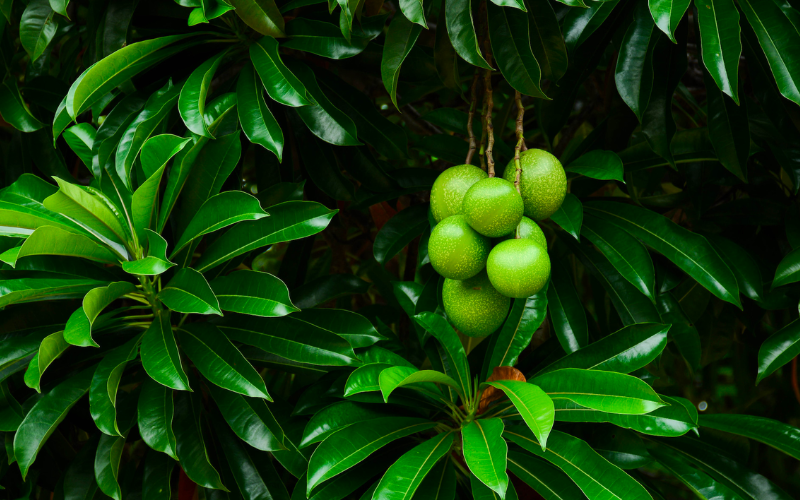
Earning its grim moniker as the ‘suicide tree,’ this plant easily justifies its inclusion on our list. Originating from South and Southeast Asia, as well as Australia, this tree produces a highly poisonous fruit known as othalanga, capable of causing cardiac arrest when consumed. Notably, it has been utilized for both homicidal and suicidal purposes.
In a surprising revelation, a 2004 study disclosed that the fruit was accountable for roughly one death per week in the southern Indian state of Kerala, predominantly linked to suicides. Its attractiveness as a tool for murder stems from its challenging detection in autopsies and the ability to mask its taste with potent spices.
2. Thornapples
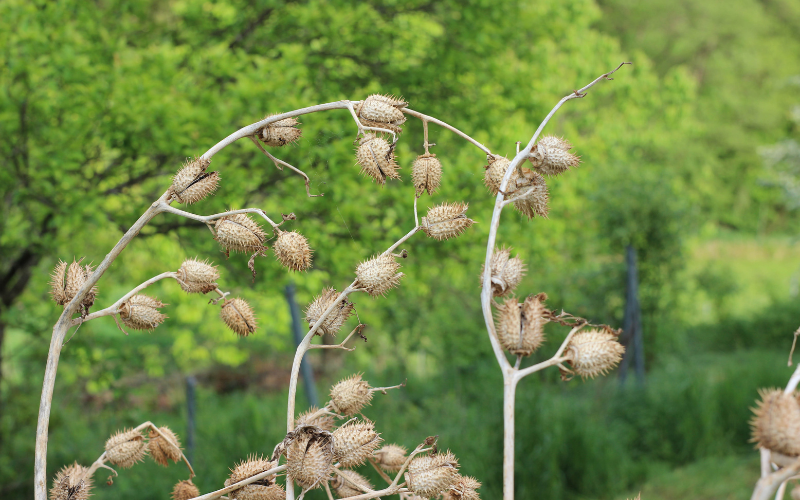
Another perilous genus is that of thornapples, aptly named devil’s trumpets and hell’s bells. Every species within this genus is highly toxic and potentially psychoactive.
The hallucinogenic qualities of these plants have led indigenous groups in the Americas to employ them for inducing visions and embarking on spiritual journeys. However, this practice is fraught with danger, as the narrow margin between a recreational dose and a lethal one makes it inherently risky. Only an in-depth understanding of their properties can marginally enhance the safety of such experiences.
These plants also bear associations with Western witchcraft, with claims suggesting that witches utilized them in the creation of hallucinogenic ‘flying ointments’.
1. Aconitum Genus
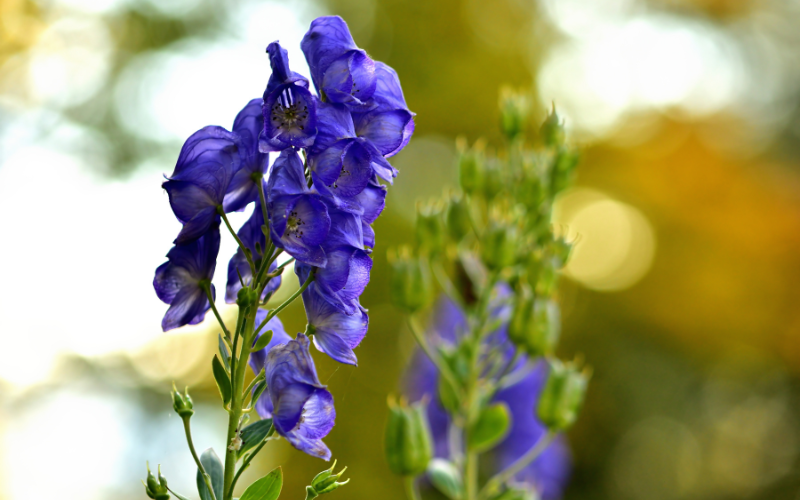
Monkshood, known by various names such as wolf’s bane, leopard’s bane, mousebane, devil’s helmet, and women’s bane, constitutes an entire genus of plants rather than a single species. Despite their high toxicity, these plants are sought after by gardeners and florists for their tall violet-blue flowers.
The poisonous substance extracted from these plants is called aconite, and it has been utilized as an arrow poison in different parts of the world, notably for hunting ibex and bears.
In addition to its use in traditional hunting practices, aconite has a dark history in human “medical” experiments. In 1524, Pope Clement VII reportedly intentionally administered aconite to two condemned prisoners to assess the effectiveness of a potential antidote. The prisoner who received the antidote survived and was granted a life sentence instead of death, while the one without the antidote suffered a painful demise.
Conclusion
In concluding our exploration of The 10 Deadliest Poisonous Plants in the World, we find ourselves standing at the crossroads of fascination and caution. Each of these toxic botanical specimens serves as a poignant reminder of the intricate dance between nature’s allure and its potential hazards. From the deceptively beautiful Oleander to the infamous Deadly Nightshade, these plants weave a narrative that transcends mere mortality. It is a testament to the complex relationship humanity shares with the plant kingdom, where curiosity must be tempered with awareness, and appreciation is accompanied by a sobering acknowledgment of the latent dangers that lie within the seemingly innocuous world of plants. As we appreciate the marvels of nature, let us also tread with respect, armed with knowledge, recognizing that even the most enchanting blooms may harbor a lethal secret.
Recent Posts
Science Trivia - Astronomy ...
Step into a realm of nostalgia as we embark on a journey through the annals of pop culture and bid farewell to 35 recently obsolete technologies. In the ever-evolving landscape of innovation, certain...
